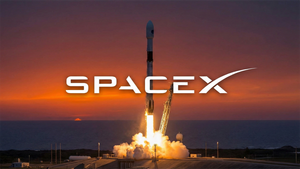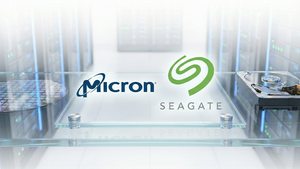
Santa Clara, CA – November 20, 2025 – Nvidia (NASDAQ: NVDA) sent shockwaves through the global financial markets yesterday with a blockbuster third-quarter fiscal year 2026 earnings report that not only shattered analyst expectations but also reignited a fervent rally across artificial intelligence and broader technology stocks. The semiconductor giant's performance served as a powerful testament to the insatiable demand for its cutting-edge AI chips and data center solutions, cementing its status as the undisputed kingpin of the AI revolution and alleviating lingering concerns about a potential "AI bubble."
The astonishing results, announced on November 19, 2025, painted a picture of unprecedented growth and profitability, driven almost entirely by the foundational infrastructure powering the world's rapidly expanding AI capabilities. Nvidia's stellar financial health and optimistic future guidance have injected a fresh wave of confidence into the tech sector, prompting investors worldwide to double down on AI-centric ventures and signaling a sustained period of innovation and expansion.
Unpacking the Unprecedented: Nvidia's Financial Prowess in Detail
Nvidia's Q3 FY2026 report showcased a financial performance that defied even the most optimistic projections. The company reported a record revenue of $57.0 billion, marking a staggering 62% year-over-year increase and a 22% sequential rise from the previous quarter. This figure comfortably outstripped Wall Street's consensus estimates, which had hovered around $54.9 billion to $55.4 billion. Diluted earnings per share (EPS) also soared, reaching $1.30 on both a GAAP and non-GAAP basis, significantly surpassing forecasts of $1.25 to $1.26 and representing a 67% year-over-year increase for GAAP EPS. Net income for the quarter surged by an impressive 65% year-over-year to $31.91 billion.
The cornerstone of this remarkable growth was, unequivocally, Nvidia's data center segment, which contributed a record $51.2 billion to the total revenue. This segment alone witnessed a phenomenal 66% year-over-year increase and a 25% sequential rise, far exceeding market estimates of approximately $49.3 billion. CEO Jensen Huang underscored the extraordinary demand, stating that "Blackwell sales are off the charts, and cloud GPUs are sold out," referring to their latest generation of AI superchips, including the Blackwell Ultra architecture. Compute revenue within the data center segment reached $43.0 billion, propelled by the GB300 ramp, while networking revenue more than doubled to $8.2 billion, highlighting the comprehensive infrastructure build-out.
Despite a slight year-over-year dip in GAAP gross margin to 73.4% (from 74.6%) and non-GAAP gross margin to 73.6% (from 75.0%), the company attributed this to the ongoing transition from Hopper HGX systems to full-scale Blackwell data center solutions, anticipating an improvement as Blackwell production ramps up. Looking ahead, Nvidia provided an exceptionally strong outlook for the fourth quarter of fiscal year 2026, forecasting revenue of approximately $65.0 billion, plus or minus 2%. This guidance substantially surpassed analyst estimates of $61.6 billion to $62.0 billion. The company also projects GAAP and non-GAAP gross margins to reach 74.8% and 75.0%, respectively, for Q4, signaling sustained robust profitability. CFO Colette Kress affirmed that Nvidia is on track to meet or exceed its previously disclosed half-trillion dollars in orders for Blackwell and next-gen Rubin chips, covering calendar years 2025-2026, demonstrating an unparalleled order book for future AI infrastructure.
Repercussions Across the AI Ecosystem: Winners and Strategic Shifts
Nvidia's stellar earnings report has had immediate and profound implications across the entire AI ecosystem, creating clear beneficiaries and prompting strategic re-evaluations among tech giants and startups alike. Following the announcement, Nvidia's stock (NASDAQ: NVDA) surged by approximately 2.85% in aftermarket trading and continued its ascent with a further 5% jump in pre-market and early trading, reaching around $196.53. This strong performance served as a powerful vote of confidence in the sustained growth of the AI market, alleviating some investor anxieties about market overvaluation.
The bullish sentiment rapidly extended beyond Nvidia, sparking a broader rally across the semiconductor and AI-related sectors. Other U.S. chipmakers, including Advanced Micro Devices (NASDAQ: AMD), Intel (NASDAQ: INTC), Broadcom (NASDAQ: AVGO), Arm Holdings (NASDAQ: ARM), and Micron Technology (NASDAQ: MU), all saw their shares climb in after-hours and pre-market trading. This indicates that the market views Nvidia's success not as an isolated event, but as a bellwether for robust demand across the entire AI supply chain, from foundational chip design to memory and networking components.
For major AI labs and tech companies heavily investing in AI research and deployment, Nvidia's sustained dominance in high-performance computing hardware is a double-edged sword. While it provides access to the best-in-class infrastructure necessary for training increasingly complex models, it also solidifies Nvidia's significant pricing power and market control. Companies like Microsoft (NASDAQ: MSFT), Google (NASDAQ: GOOGL), and Amazon (NASDAQ: AMZN), which operate vast cloud AI services, are simultaneously major customers of Nvidia and potential competitors in custom AI silicon. Nvidia's latest report suggests that for the foreseeable future, reliance on its GPUs will remain paramount, potentially impacting the development timelines and cost structures of alternative AI hardware solutions. Startups in the AI space, particularly those focused on large language models or specialized AI applications, will continue to rely heavily on cloud infrastructure powered by Nvidia's chips, making access and cost critical factors for their growth and innovation.
The Broader AI Landscape: Sustained Boom or Overheated Optimism?
Nvidia's Q3 FY2026 earnings report firmly places the company at the epicenter of the broader AI landscape, validating the prevailing narrative of a sustained and accelerating AI boom. The sheer scale of demand for its data center products, particularly the Blackwell and upcoming Rubin architectures, underscores the foundational role of specialized hardware in driving AI advancements. This development fits squarely within the trend of massive capital expenditure by cloud providers and enterprises globally, all racing to build out the infrastructure necessary to leverage generative AI and other advanced machine learning capabilities.
The report's impact extends beyond mere financial figures; it serves as a powerful indicator that the demand for AI computation is not merely speculative but deeply rooted in tangible enterprise and research needs. Concerns about an "AI bubble" have been a persistent undercurrent in market discussions, with some analysts drawing parallels to previous tech booms and busts. However, Nvidia's "beat and raise" report, coupled with its unprecedented order book for future chips, suggests that the current investment cycle is driven by fundamental shifts in computing paradigms and real-world applications, rather than purely speculative fervor. This sustained demand differentiates the current AI wave from some previous tech milestones, where adoption often lagged behind initial hype.
Potential concerns, however, still linger. The rapid concentration of AI hardware supply in the hands of a few key players, primarily Nvidia, raises questions about market competition, supply chain resilience, and the potential for bottlenecks. While Nvidia's innovation pace is undeniable, a healthy ecosystem often benefits from diverse solutions. The environmental impact of these massive data centers and the energy consumption of training increasingly large AI models also remain significant long-term considerations that will need to be addressed as the industry scales further. Nevertheless, the Q3 report reinforces the idea that the AI revolution is still in its early to middle stages, with substantial room for growth and transformation across industries.
The Road Ahead: Future Developments and Expert Predictions
Looking ahead, Nvidia's Q3 FY226 earnings report provides a clear roadmap for near-term and long-term developments in the AI hardware space. The company's aggressive ramp-up of its Blackwell architecture and the confirmed half-trillion dollars in orders for Blackwell and next-gen Rubin chips for calendar years 2025-2026 indicate a robust pipeline of high-performance computing solutions. We can expect to see further integration of these advanced GPUs into cloud services, enterprise data centers, and specialized AI research initiatives. The focus will likely shift towards optimizing software stacks and AI frameworks to fully leverage the capabilities of these new hardware platforms, unlocking even greater computational efficiency and performance.
Potential applications and use cases on the horizon are vast and varied. Beyond the current focus on large language models and generative AI, the enhanced computational power will accelerate breakthroughs in scientific discovery, drug design, climate modeling, autonomous systems, and personalized medicine. Edge AI, where AI processing happens closer to the data source, will also see significant advancements as more powerful and efficient chips become available, enabling real-time intelligence in a wider array of devices and industrial applications. The tight integration of compute and networking, as highlighted by Nvidia's growing networking revenue, will also be crucial for building truly scalable AI superclusters.
Despite the optimistic outlook, several challenges need to be addressed. Supply chain resilience remains paramount, especially given the geopolitical landscape and the complex manufacturing processes involved in advanced semiconductors. The industry will also need to tackle the increasing power consumption of AI systems, exploring more energy-efficient architectures and cooling solutions. Furthermore, the talent gap in AI engineering and data science will likely widen as demand for these skills continues to outpace supply. Experts predict that while Nvidia will maintain its leadership position, there will be increasing efforts from competitors and major tech companies to develop custom silicon and open-source AI hardware alternatives to diversify risk and foster innovation. The next few years will likely see a fierce but healthy competition in the AI hardware and software stack.
A New Benchmark for the AI Era: Wrap-up and Outlook
Nvidia's Q3 FY2026 earnings report stands as a monumental event in the history of artificial intelligence, setting a new benchmark for financial performance and market impact within the rapidly evolving sector. The key takeaways are clear: demand for AI infrastructure, particularly high-performance GPUs, is not only robust but accelerating at an unprecedented pace. Nvidia's strategic foresight and relentless innovation have positioned it as an indispensable enabler of the AI revolution, with its Blackwell and upcoming Rubin architectures poised to fuel the next wave of computational breakthroughs.
This development's significance in AI history cannot be overstated. It underscores the critical interdependency between advanced hardware and software in achieving AI's full potential. The report serves as a powerful validation for the billions invested in AI research and development globally, confirming that the industry is moving from theoretical promise to tangible, revenue-generating applications. It also signals a maturing market where foundational infrastructure providers like Nvidia play a pivotal role in shaping the trajectory of technological progress.
The long-term impact will likely include a continued push for more powerful, efficient, and specialized AI hardware, further integration of AI into every facet of enterprise operations, and an acceleration of scientific discovery. What to watch for in the coming weeks and months includes how competitors respond with their own hardware roadmaps, the pace of Blackwell deployments in major cloud providers, and any shifts in capital expenditure plans from major tech companies. The market's reaction to Nvidia's guidance for Q4 will also be a key indicator of sustained investor confidence in the AI supercycle. The AI journey is far from over, and Nvidia's latest triumph marks a significant milestone on this transformative path.
This content is intended for informational purposes only and represents analysis of current AI developments.
TokenRing AI delivers enterprise-grade solutions for multi-agent AI workflow orchestration, AI-powered development tools, and seamless remote collaboration platforms.
For more information, visit https://www.tokenring.ai/.







